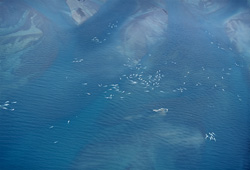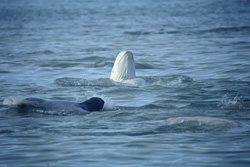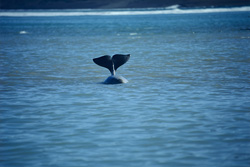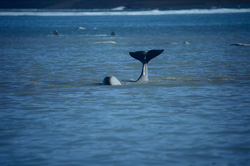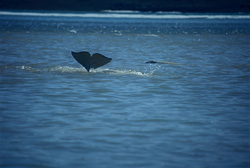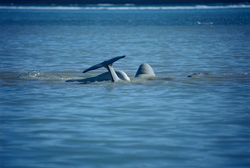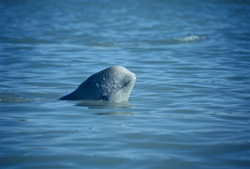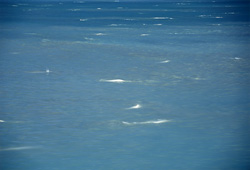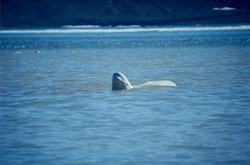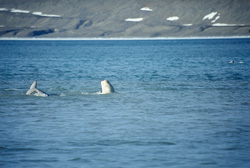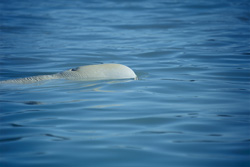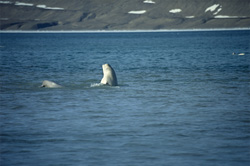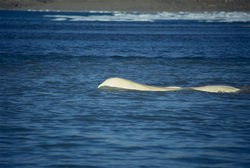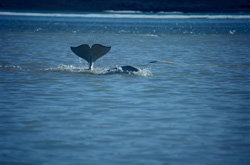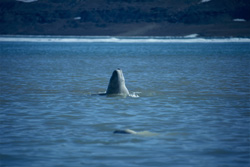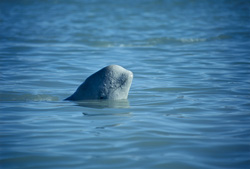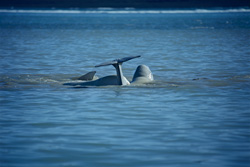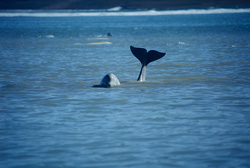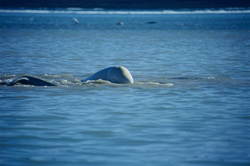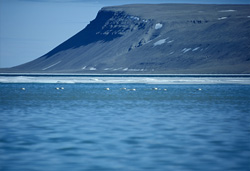Discover the Majestic Beluga Whales in Their Natural Habitat at Cunningham Inlet, Somerset Island
At Cunningham Inlet on Somerset Island, one of the most significant migration routes for Beluga whales in the Arctic stretches. Each year, particularly in July and August, thousands of these graceful marine mammals converge in the inlet to shed their old skin and develop new ones. The Beluga (Delphinapterus leucas), also known as the White Whale, are distinguished by their characteristic bluish-white to creamy-white coloration, reaching lengths of up to six meters and weights of up to 1,000 kilograms. These intelligent and social creatures lack dorsal fins, giving them a unique swimming style. The juveniles often display brown or gray tones, which transition to the typical white as they mature. Due to their extensive acoustic repertoire, Beluga whales are often referred to as the Canaries of the Sea because their sounds are audible over ship noises and were historically detected by sailors and whalers. These sounds play a crucial role in the communication and navigation of whales within their pods. Despite their reputation and adaptability, Beluga whales are currently highly threatened by human activities. Bycatch in fishing nets poses a significant danger, and the number of whales killed unintentionally by bycatch now surpasses those lost through historical commercial whaling. Additional threats include ocean pollution, climate change, and the destruction of their natural habitat. Conservation efforts and sustainable fishing practices are essential to ensure the survival of these fascinating marine mammals. The IUCN Red List categorizes the Beluga as vulnerable, highlighting the urgent need for action. Visit the Delphinapterus leucas
IUCN Red List of Threatened Species for more information and to support the protection of Beluga whales.


